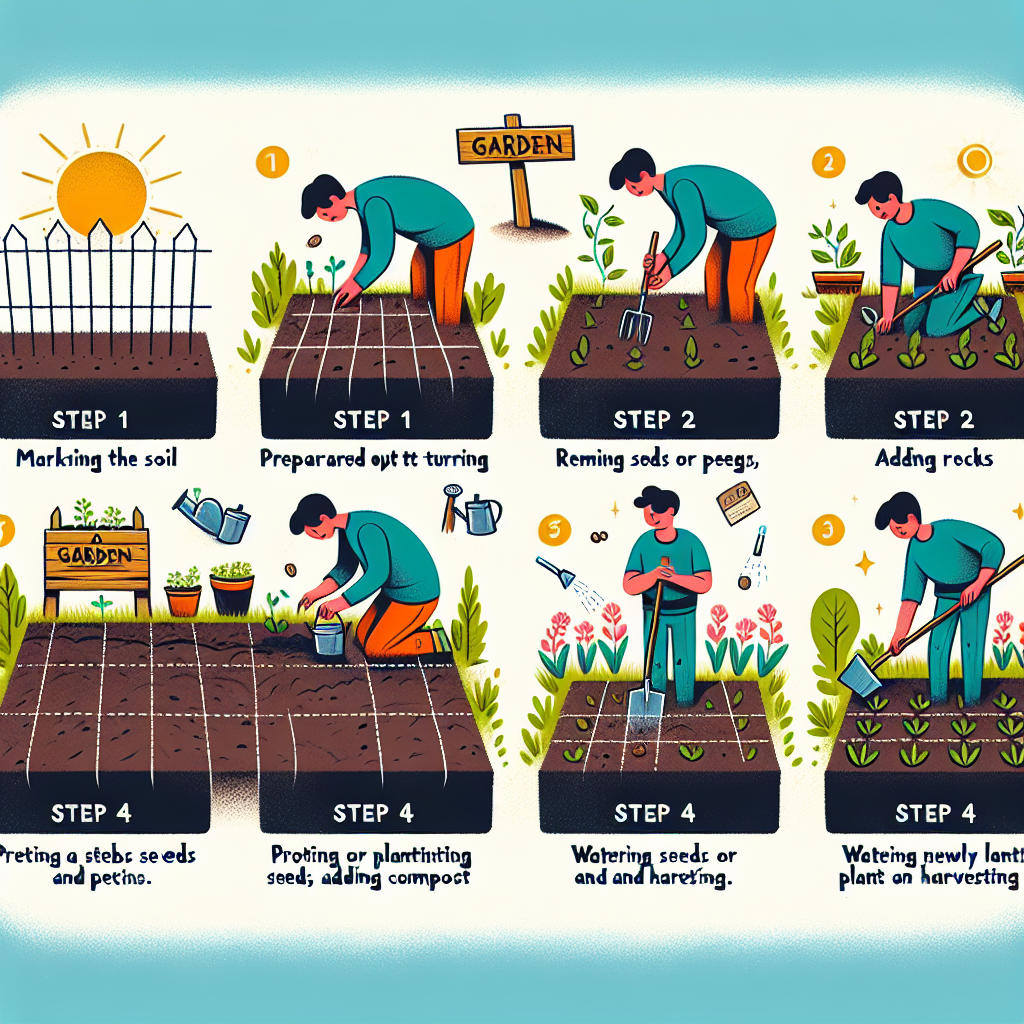
How to start a garden from scratch for beginners
How to Start a Garden from Scratch for Beginners
Gardening is a rewarding hobby that not only beautifies your living space but also provides fresh produce and a deeper connection with nature. If you’re a beginner looking to dive into the wonderful world of gardening, this guide will walk you through the essential steps on how to start a garden from scratch for beginners.
Why Gardening?
Before getting into the nitty-gritty of gardening, it’s worth understanding why so many people choose to cultivate plants. Some benefits of gardening include:
- Physical Health: Gardening is a great form of exercise.
- Mental Well-Being: Spending time in nature reduces stress and anxiety.
- Food Security: Growing your own food can be a significant financial benefit.
- Environmental Impact: Gardens can help promote biodiversity.
Choosing Your Garden Location
The first step in starting your garden is selecting the ideal location. Here are some factors to consider when choosing a spot:
- Sunlight: Most plants need 6-8 hours of sunlight daily.
- Soil Quality: Check the soil type; it should be rich in organic matter.
- Water Source: Make sure you have easy access to a water supply.
- Protection: Ensure your garden is protected from harsh wind and pests.
Planning Your Garden Layout
Before planting, it’s essential to plan your garden layout. Consider these components:
- Garden Size: Determine how much space you’re willing to dedicate to your garden.
- Plant Selection: Decide which plants you want to grow based on your climate and preferences.
- Garden Style: Consider whether you’d like a raised bed, in-ground, or container garden.
Preparing the Soil
Soil preparation is a crucial step when starting your garden. Healthy soil leads to strong plants. Follow these steps:
- Clear the Area: Remove weeds, rocks, and debris from your chosen location.
- Test the Soil: Purchase a soil testing kit to determine pH and nutrient levels.
- Add Organic Matter: Mix in compost or aged manure to improve soil fertility.
- Till the Soil: Use a shovel or tiller to loosen the soil, which allows roots to penetrate easily.
Selecting Plants for Beginners
When deciding how to start a garden from scratch for beginners, it’s crucial to select plants that are easy to grow. Here are some excellent options:
- Tomatoes: A summer favorite, ideal for sunny gardens.
- Radishes: Quick to grow and perfect for beginners.
- Herbs: Basil, parsley, and mint are low-maintenance choices.
- Lettuce: Grows fast and can be harvested multiple times.
Starting Seeds or Transplants?
Deciding whether to start your garden from seeds or transplants is essential. Here are some pros and cons:
| Method | Pros | Cons |
|---|---|---|
| Seeds | Cost-effective; more variety | Takes longer to grow |
| Transplants | Faster results; convenient | More expensive; limited varieties |
Planting Your Seeds or Transplants
Once you’ve decided whether to use seeds or transplants, it’s time to plant! Here’s how:
- Read the Instructions: Follow the guidelines on seed packets or plant labels regarding planting depth and spacing.
- Create Rows: If using seeds, create straight rows or holes for planting.
- Transplant: When using transplants, dig a hole slightly bigger than the root ball and gently place the plant in.
- Water: Water your newly planted seeds or transplants to help them settle into the soil.
Watering Your Garden
Watering is vital to ensure the success of your garden. To water effectively, consider the following tips:
- Consistency: Water regularly, especially during dry spells.
- Time of Day: Early morning or late afternoon is the best time to water.
- Soil Check: Test the soil moisture before watering; it should be damp but not soggy.
Fertilizing Your Plants
To ensure healthy growth, your plants may need additional nutrients. Here’s how to fertilize:
- Choose Organic: Use organic fertilizers like compost, fish emulsion, or bone meal.
- Follow Instructions: Always follow the recommended dosage on the package to avoid fertilizer burn.
- Timing: Fertilize during the growing season, generally every 4-6 weeks.
Pest and Disease Management
Keeping your garden free from pests and diseases is crucial. Follow these preventive measures:
- Regular Inspections: Look for signs of pests or diseases.
- Companion Planting: Certain plants deter pests when planted together.
- Natural Remedies: Use solutions like neem oil or insecticidal soap.
Harvesting Your Crops
As your plants grow, you’ll eventually be able to enjoy the fruits of your labor. Here’s when and how to harvest:
- Timing: Harvest vegetables and fruits at their peak ripeness for the best flavor.
- Technique: Use sharp tools to cut fruits and vegetables to avoid damaging the plant.
- Storage: Store harvested goods in a cool, dry place to maximize freshness.
Creating a Sustainable Garden
Finally, consider ways to create a sustainable garden that benefits the environment:
- Composting: Reduce waste by starting a compost bin for kitchen scraps and yard waste.
- Native Plants: Plant native vegetation to support local wildlife.
- Rainwater Harvesting: Collect rainwater for watering your garden.
Conclusion
Embarking on your gardening journey can be both exciting and enriching. With the right knowledge and a little bit of patience, anyone can learn how to start a garden from scratch for beginners. Remember to enjoy the process, celebrate small wins, and take the time to appreciate your garden's beauty as it grows. Happy gardening!
By Guest, Published on October 14th, 2024